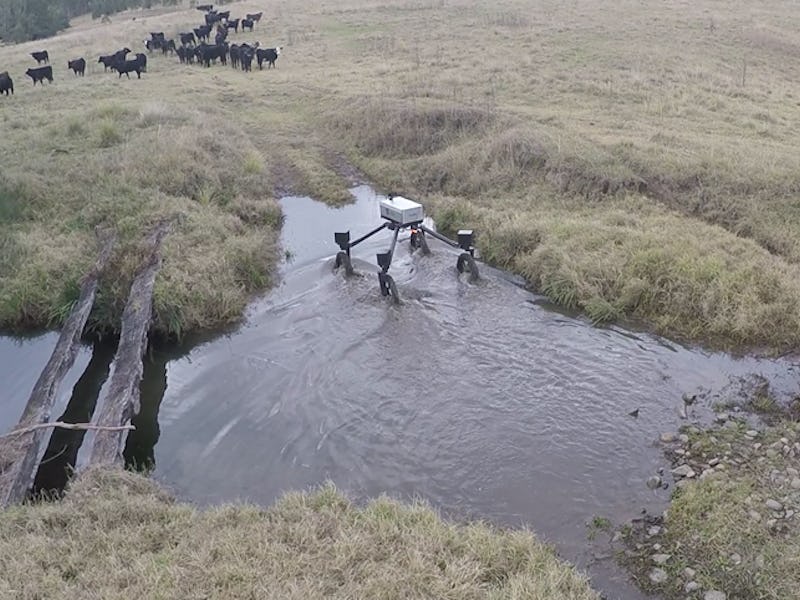The Future of Cattle Herding Just Might Be the "SwagBot"
SwagBot can move a herd of cattle wherever its operator wishes.

It’s safe to say that, over the past several centuries, humans have gotten pretty good at herding. It’s labor-intensive work with long hours outside while demanding an exacting focus on the herd’s health and possible predators. Being a ranch hand is a tough job.
Enter, of course, robots. It’s not a robot takeover, exactly. That’s because the unfortunately named SwagBot — built by the University of Sydney’s Australian Centre for Field Robotics program — is remote-controlled.
One of the robot’s more run-of-the-mill functions is to tow farm equipment. But its main purpose, and the one that could actually make an impact in the literal field, is shepherding. SwagBot can move a herd of cattle wherever its operator wishes. Sheepdogs succeed at herding flocks of sheep because they appear to be predators, and it’s pretty clear that that’s what’s happening here, too, with these cows. SwagBot scares the daylights out of these poor bovines. And as a result, it’s a great tool. In addition, SwagBot’s design is such that it can overcome most if not all of a cattle field’s various obstacles.
But before robots relieve farmers, they’ll need to learn. Or, rather, humans will need to build and then teach these robots how to farm. The University of Sydney’s program has built a number of farming robots already, all with pretty amusing appellations: there’s the solar-powered Ladybird, whose duties include “mapping, classification, detection, weeding and ultimately harvesting” vegetables; Mantis and Shrimp are two “general purpose perception research ground vehicles,” which in essence means they’re earthbound Curiosity rovers equipped to facilitate farming.
ACFR says that in the future, it hopes to make its SwagBots autonomous. Tesla Motors may want to rethink its master plan.